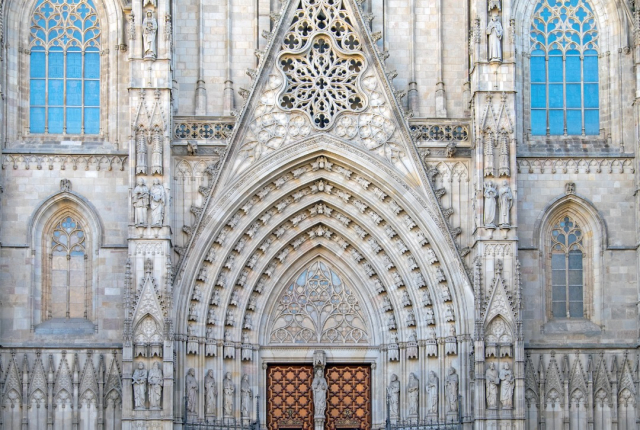Camí de Sant Jaume or Catalan Way: Stages and Map
We tell you the history and the different routes of the Camí de Sant Jaume, also known as the Catalan Way
What is the Camí de Sant Jaume?
Origin of the Camí de Sant Jaume
Camí de Sant Jaume: Variants
As we have said, the starting point is the Monastery of Santa María de Montserrat, but where does it continue? Currently there are two recognized variants, which link with other Paths and both will give the most traditional French Way. There are three common stages in both variants: Montserrat - Igualada, Igualada - La Panadella and La Panadella - Tárrega. It is in this municipality where the Catalan Way is divided: one branch deviates towards Lleida and the other deviates towards Balaguer. The first three stages are 77 kilometers.
- Camino de Santiago Catalán through Lleida - to Fuentes del Ebro
The Camino de Santiago Catalán through Lleida is called Camí de Sant Jaume, the most common and traditional. This crosses the Ebro valley and joins in Fuentes del Ebro with the Jacobeo del Ebro road, which comes from Tortosa and then passes through Zaragoza. It joins the French Way in Logroño, so pilgrims who opt for this option will not pass through Puente la Reina.
This road is a total of 7 stages from Tárrega, about 188 kilometers, with an average of 26 km stages: Tárrega - El Palau, El Palau - Lleida, Lleida - Fraga, Fraga - Candasnos, Candasnos - Buajaraloz, Buajaraloz - Pina de Ebro, Pina de Ebro - Fuentes del Ebro.
- Camino de Santiago Catalán by Balaguer - to Santa Cilia de Jaca
The Camino de Santiago Catalán by Balaguer and Huesca is known as the Camino de Montserrat. This goes up to the variant of the French Way that crosses the border through the port of Somport, connecting in the municipality of Santa Cilia de Jaca, a piece before reaching Puente la Reina. From here, the Ebro Valley will descend and join the pilgrims of the Jacobeo del Ebro Trail in Logroño.
This variant of the Catalan Way has more stages, about 10, with a total of 243 kilometers to Santa Cilia de Jaca: Tàrrega - Linyola, Linyola - Algerri, Algerri - Tamarite de Litera, Tamarite de Litera - Monzón, Monzón - Berbegal, Berbegal - Pueyo de Fañanás, Pueyo de Fañanás - Huesca, Huesca - Bolea, Bolea - La Peña Station, La Peña Station - Santa Cilia.
Credential on the Camí de Sant Jaume
Routes
Blog
 ¿Vas a hacer el camino de Santiago? Cuida tus pies antes y después
¿Vas a hacer el camino de Santiago? Cuida tus pies antes y después
 5 razones por las que contratar un seguro de viajes
5 razones por las que contratar un seguro de viajes
 Formas de hacer un logotipo
Formas de hacer un logotipo
 La importancia del registro de llamadas durante tu viaje por el Camino de Santiago
La importancia del registro de llamadas durante tu viaje por el Camino de Santiago
Information
Points of interest
Cities & Towns | Hostels | Lodgings | Restaurants | Saddlery | Doctors | Points of interest | Bikes workshop
Contact us | Privacy policy | Cookies policy | | Terms of use | Authorship | Web Map | Consentimiento
© Copyright LA VOZ DE GALICIA S.A. Polígono de Sabón, Arteixo, A CORUÑA (ESPAÑA) Inscrita en el Registro Mercantil de A Coruña en el Tomo 2438 del Archivo, Sección General, a los folios 91 y siguientes, hoja C-2141. CIF: A-15000649
